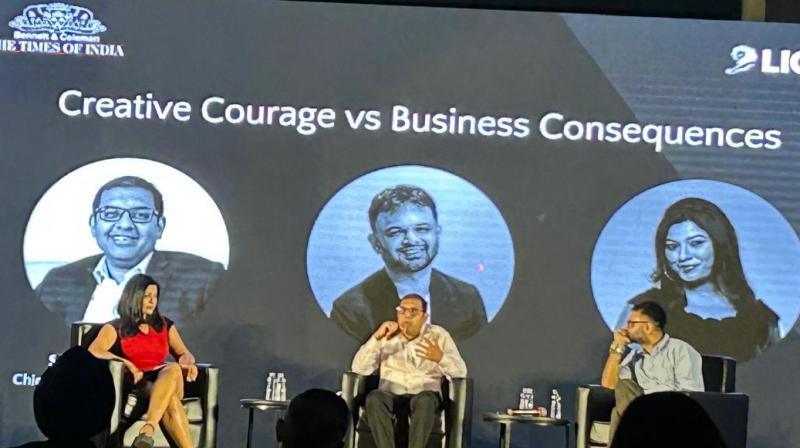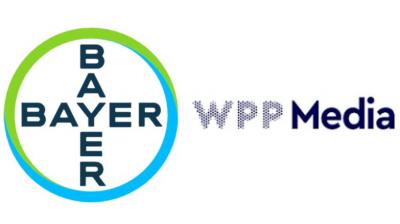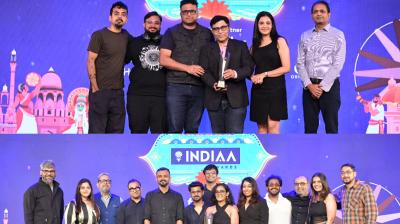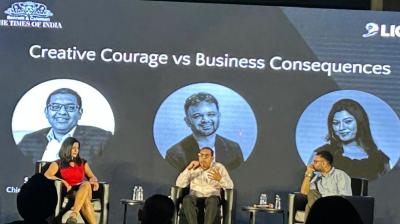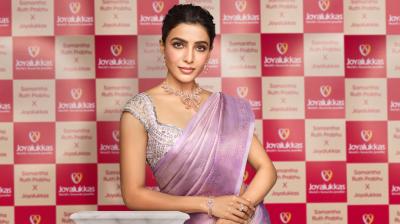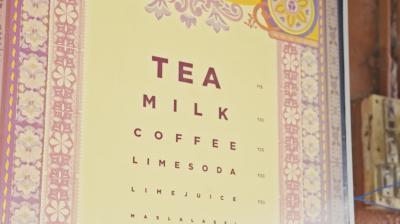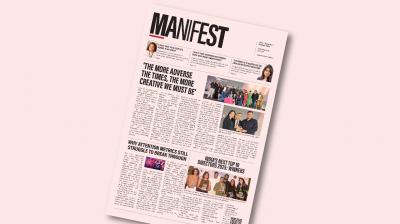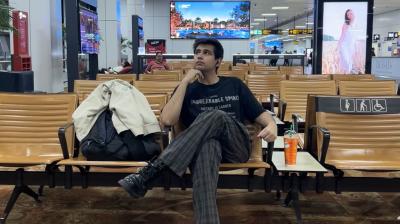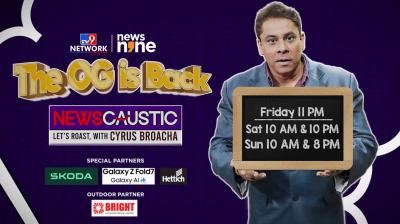At the Cannes Lions Unpacked event, held in collaboration with The Times of India in Mumbai, on 7 October, panellists Shuvadip Banerjee, chief digital marketing officer, ITC, and Aalap Desai, co-founder and CCO, tgthr, took the stage for a session on the balance between creative courage and business responsibility in marketing.
The session was moderated by Sonali Krishna, senior editor, ET Brand Equity.
During the discourse, Banerjee and Desai delved into how brands navigate public backlash and growing cultural hypersensitivity in marketing, exploring where creative bravery meets business risk.
Through real-world examples and candid reflections, the discussion examined why brands hesitate to take bold stands and how the industry can mature in handling controversy with agility and awareness.
The duo also highlighted the need for a collaborative approach between clients and agencies, the impact of short-term metrics on long-term brand building, and the role of increased consumer sensitivity in shaping creative content.
The session opened with Banerjee emphasising the stakes involved in championing a bold idea.
“When you greenlight a bold, creative idea, you know what’s at stake — both for you personally and for the brand,” he said. “Of course, when it comes to what’s really at stake, it’s your credibility. Ultimately, it’s the brand that’s being put on the line. But let’s take a step back and look at it through the lens of creativity. With hyper-fragmentation, hyper-personalisation, and now the flood of GenAI-led sameness, the role of creativity is at its peak. It’s probably the biggest currency of relevance and the strongest driver of profitable growth.”
Banerjee was careful to define what boldness really means in marketing. “Bold isn’t about shock value. In my view, it’s about strategic bravery. It’s about how you tie an idea back to a specific consumer need, and how you maintain that consistency at scale," he remarked.
Banerjee illustrated this point with an example from ITC’s cookie brand launch during the early days of Covid. “We could have easily talked about how it’s crunchier, more buttery, with more nuts. But we stopped ourselves. We took the brand name off the pack and instead featured a mother wearing a red cape. The pack simply read: A space from Mom’s magic. That’s where the journey began.”
The campaign went beyond packaging design to spark a deeper cultural conversation.
“The following year, we discovered through Truecaller that the largest number of missed calls weren’t from boyfriends, girlfriends, or bosses — they were from mothers. So we built content around that insight, turning it into a social conversation. And last year, we came across a survey that shocked us. It showed that in at least 7% of homes where there’s a son, parents don’t sign anything in their will for their daughters. We thought it was limited to lower-income segments, but even in cities like Mumbai, the number was double — 14%.”
Banerjee added, “That insight led us to create a movement urging mothers to take a pledge to change this reality. Today, nearly two million mothers have signed it. So when we talk about being bold, it’s not about being righteous. It’s about being strategic about how you approach the problem and find purpose-driven solutions.”
Desai picked up the thread, putting courage into perspective. “Courage is slightly misunderstood. It’s great to be brave, but think of any horror movie there’s always that one person who knows there’s a monster in the shadows and still walks right into it. That’s courage, too, but it’s mixed with stupidity. The point is, courage without a plan, or done just for shock value, can hurt one's reputation. Being courageous isn’t a strategy if it’s just a gamble. Everything we put out in the market is a risk people might love it, hate it, or ignore it. But courage with a plan, that’s what delivers results. That’s when everyone wins.”
Banerjee added a practical example, recounting the launch of Bingo. “We had four or five ads ready, one route was sleek and aspirational, the other rooted in humour and Indian quirk. When we saw the creatives in the room, there was dead silence. We ran the tests, and they failed miserably — miserably is an understatement. But we still decided to go ahead because we believed in the brand’s irreverent, fun tone. That decision, though risky, set the foundation for what Bingo is today. You could call it reckless, but really, it was a gut call, and gut, after all, comes from experience built up over time.”
Desai underscored the importance of client-agency alignment in taking risks. “The phrase about pushing clients for brave work only comes up in rooms where neither side is being fully honest. Great work isn’t about one party; it’s about the people working on it and their alignment. If there’s fear hanging over the team — a sword saying, ‘If this fails, you’ll lose your job’ or ‘we’ll lose the account’ — it’s a recipe for disaster. Agencies could lose the account, clients could lose market share, and everyone suffers. It’s not about us pushing them or them pushing us; it’s about both sides being on the same page. Agencies can’t force a client to release a campaign, and a client can’t force an agency to execute something unless there’s mutual trust and understanding. That’s when the best ideas come to life, without anyone getting hurt.”
The conversation naturally turned to the constraints posed by short-term metrics. When asked whether today’s focus on ROI handicaps brave creative work, Banerjee acknowledged the tension. “The metrics we measure, rates, CTRs, conversions, are great to keep us accountable and grounded, but if we focus solely on them, everything becomes transactional and long-term brand-building takes a hit. That said, most of us have seen that when you invest in strengthening the brand, these intermediate metrics also improve. For example, running demand-driven communications often boosts organic conversions on e-commerce platforms and increases brand search — everything feeds into each other. Bold, brave ideas may take longer to reflect in these numbers, but it’s about finding the right balance. Short-term stats matter, but we’ve learned to manage them alongside long-term brand growth.”
Desai weighed in on the iterative nature of creative work. “No one wakes up thinking they’ll do mediocre work today. Everyone tries their best. It’s about getting the right mix and keeping at it. Every piece of interesting work I’ve managed to pull off was because the stars aligned — the right moment, the right team. If your creative piece isn’t ready at that moment, that moment passes, and you end up doing another, simpler campaign. You have to keep trying.”
Desai compared the Indian market to other creative hubs, he said, “Are we doing enough? No, we’re not. Thailand had a distinct flavour in advertising for over a decade, Japanese brands have their own bold style — and that turns into great, iconic work. In India, we have bursts of work, but it’s fragmented. We’re still figuring out what Indian advertising stands for.”
Both panellists reflected on the cultural fear that hinders bold campaigns.
Desai said, “We’re stuck because everyone in the room making decisions on a bold campaign is too scared to push the button. We crucify people too much when they fail. In theory, failure is accepted in appraisals or presentations, but in reality, the blame gets passed around. Market share is lost, accounts are lost, reputations are dented, but we need to try new things and learn from them. Globally, brands like Dove have consistent agency relationships over the years — we don’t have that yet. Until we do, blame-shifting keeps happening and nothing gets achieved at scale.”
Banerjee added that the heightened consumer sensitivity also plays a role. “Sometimes we are too careful about content because anyone can react strongly on social media, even without expertise. But we’re also guilty as brand owners — we don’t give creative teams enough space. Ideas are crucified too early, and we don’t celebrate failures. These sound like preaching points, but in practice, we put too many constraints on creativity.” He cited examples, from workshops that were killed for fear of backlash to campaigns like ITC’s juices, which highlighted support for local farmers but didn’t resonate with consumers.
Desai elaborated, “If an idea fails, the agency bears most of the impact — revenue, accounts, reputations. The brand suffers too, but agencies carry the brunt. There’s risk, but that’s part of doing bold work.”
Banerjee added, “The level of awareness and sensitivity has increased tremendously, from greenwashing concerns to content messaging. We must respect that while still being honest in what we communicate. Some ideas get cancelled because we don’t fully understand the cultural sensibilities, which is part of the cleansing process today.”
Banerjee signed off with a recent example, illustrating the unpredictability of hypersensitivity. “A tiffin box ad had vegetables on one side and a sweet on the other. The message was misinterpreted — people assumed the brand was replacing vegetables with sugar. There was a huge backlash from influencers with large followings. This shows that even well-intentioned campaigns need agility and preparedness to handle hypersensitive audiences," he shared.


